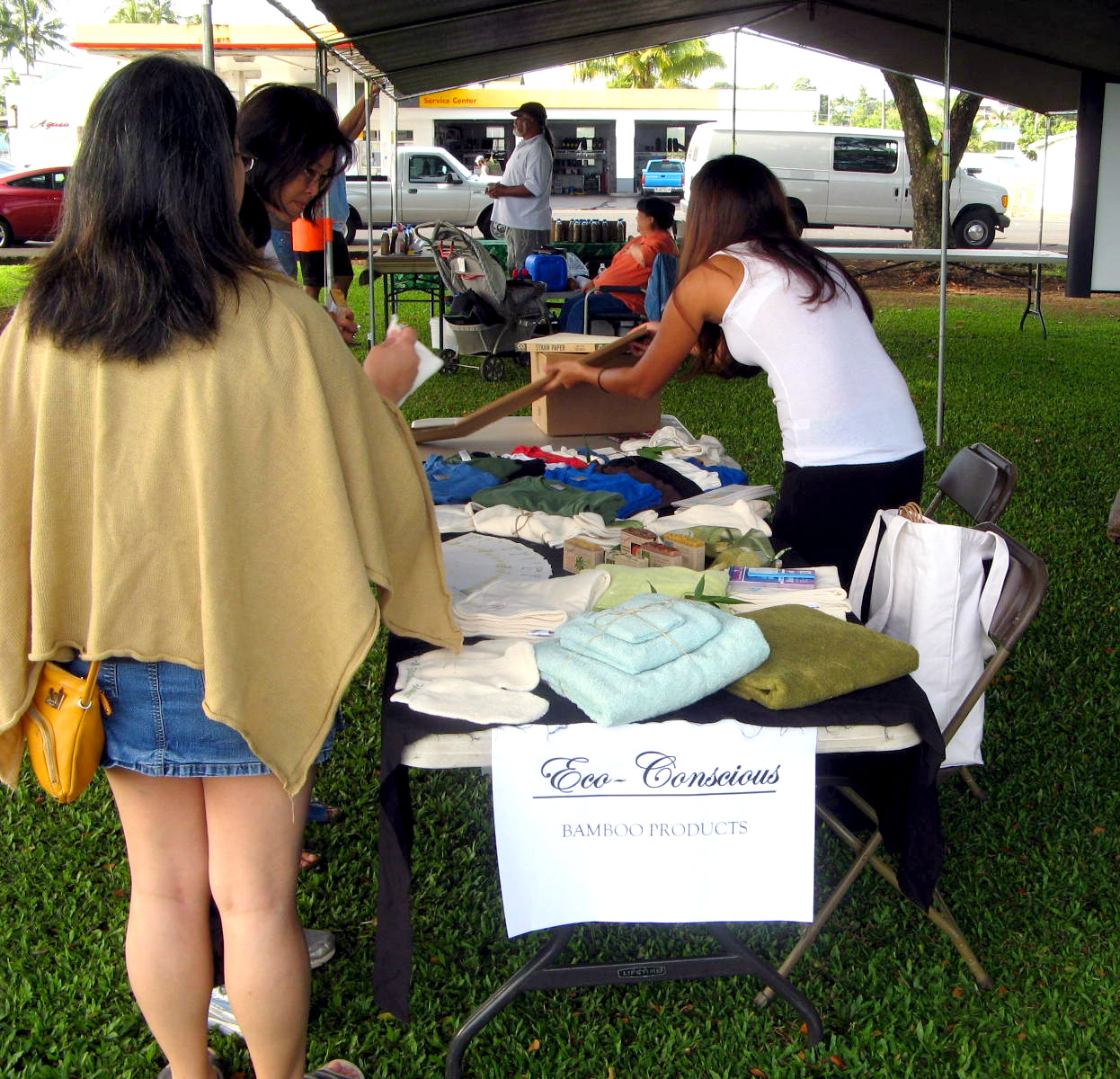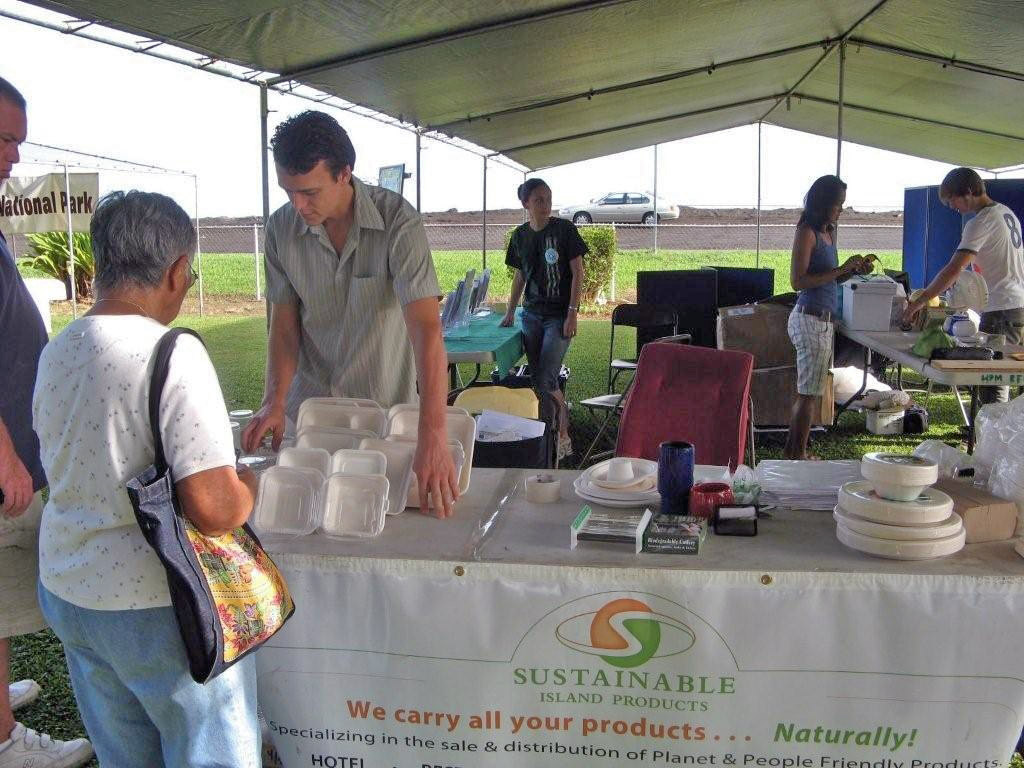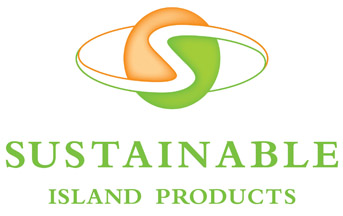“Korean Natural Farming” is a way of farming practiced in many countries in Asia, and it is to Western farming as acupuncture is to Western medicine. Its basic premise is that farmers can generate most, if not all, of the necessary inputs to food production onsite. It is a holistic approach to farming that is quite different from what most of us are accustomed to. If this method of farming can work here in Hawai‘i, one can see the possibility of getting off oil dependency.
There’s a tour to Korea being arranged for the spring, to see this natural farming method in action, and I’m going to go see for myself.
Western-style food production, of course, is very much dependent on oil for its inputs. Matt Simmons, an internationally renowned investment banker and Peak Oil Advocate, was keynote speaker at Energy Challenge ‘08, which was held recently in Kona. He said the world now produces 75 million barrels of oil per day, and that this will decline to 25 million barrels per day in 2030. The era of cheap oil is over.
This means that food prices will rise to unbelievable heights. I’ve said before that we need to use all the tools available to us in order to pass on a livable world to future generations. We cannot afford to give up anything that will help us survive out here in the middle of the Pacific. We need to use every tool and every opportunity available to us, and we need to pass on, to future generations, every possible advantage.
The following invitation tells more about the upcoming visit to Korea.
To: Hawaii County Administration and Leaders in Agriculture and Tourism:
We are currently progressing towards developing a “Sister City” relationship with Goseong County and Hawaii County in regards to agriculture and tourism. Goseong County is located in South Korea and has adopted a unique and specialized natural farming system. A tour is being planned for March 2009 to establish this goodwill with Goseong and we would like for you to join us. Your leadership and support is vital to help get this started which will greatly enhance the future of agricultural sustainability and tourism in Hawaii County. Background and pertinent information is provided below and we request for your reply by December 23, 2008.
Natural Farming/ Living Environmental Farming Goodwill Tour in Goseong, Korea
Cho Global Natural Farming-USA (CGNF), County of Hawaii, and the College of Tropical Agriculture (CTAHR) will be collaborating on an exploratory and goodwill tour of Goseong County in South Korea. The main mission is to initiate a “Natural Farming & Tourism Sister City” relation with Hawaii County based upon research and empirical information. Goseong has instituted a regional “Living Environmental Farming” program which promotes natural or sustainable agricultural practices. We hope to have a team of Big Island government and industry agricultural leaders to partake in this educational
assessment and establishment of goodwill with a unique County government which has been successful in instituting programs promoting sustainable agriculture and tourism for their region. CGNF envisions that Hawaii farmers will greatly benefit by learning and adopting natural farming concepts, methods, and technologies developed in Korea. The result of this goodwill relation will be a new development towards the natural farming sector in our community and thus an enhancement for both agriculture and tourism in
Hawaii.
This is being planned for this coming March 25-30, 2009. We anticipate about 15 travelers as part of this team. Each participating traveler would be responsible for their own airfare, hotel and food which is estimated to be around $2,000 (depending on oil prices).
Below are an overview of the background, current accomplishments, and purpose of this effort.
I. Background
* The natural farming community in Hawaii envisions promoting and adopting natural farming methods which were developed in Asia (Korea, Japan, Thailand, China, Philippines, Malaysia, Indonesia, Cambodia, India etc.) and proven to be a successful sustainable farming system for future generations.
* The major impetus in Hawaii since 2005 has been through the efforts of Dr. Hoon Park, a retired MD from Hilo, who has attended several intensive Korean Natural Farming workshops and who has been instrumental in introducing to Hawaii and the USA, Cho Han Kyu, the founder of the Janong (Natural Farming) Institute in Korea and one of the world renown natural farming scholars.
II. Accomplishments in Hawaii
* As a result of these activities in Hawaii, Cho Global Natural Farming-USA (CGNF-USA) was started and is now based in Kona. Dr. Hoon Park is the current president. Numerous composting making workshops were held in both east and west Hawaii and on Oahu.
* An intensive Natural Farming Workshop, taught by Han Kyu Cho and daughter Ju-Young Cho was held at the University of Nations in Kona in June of 2008.
* A natural farming curriculum for Big Island students was initiated at the Hawaii Community College by David Ikeda.
* Several Hawaii-Korean farmers attended the one week intensive training at the Cho Global Natural Janong Institute in Korea and are beginning to employ these novel methods.
* CTAHR Hawaii County extension agents visited several natural farming farms in Korea and experienced first hand testimony from successful growers who have been trained through the Janong Institute (CGNF) program.
* Agriculturalists and gardeners in Hawaii are exploring this method with very successful results and local chapters are being organized.
* A natural farming swine farm is being developed by local investors in Kurtistown utilizing the Cho Global Natural Farming technology and is soon to be operational.
* A 2 ton capacity composting machine has been installed in Kurtistown. Permits are currently being negotiated.
III. Purpose of Travel
The objectives of this visit are:
1. To develop a “Natural Farming Sister City” relationship between Hawaii County and Goseong County which has instituted successful agricultural and tourism programs. You may visit their city website at:
http://eng.goseong.go.kr/main/main.asp.
2. To gain more firsthand knowledge about sustainable farming technology from South Korea which utilizes “Living Environmental Farming”, a natural or sustainable agricultural system practiced by farmers and ranchers throughout the entire Goseong County.
3. To develop a plan to exchange information on crop and animal husbandry, composting, pathogen issues and to adopt appropriate and specialized technology with CTAHR and growers that will lead to the establishment of Hawaii County as an important tropical natural farming location.
4. Develop a proposal to create a venue to help the local agricultural and tourist economy based upon healthy lifestyles and in an eco-friendly manner.
IV. Tentative Agenda in Goseong (Dr. H. Park to escort and assist with English translation)
1. Visit with the Goseong mayor and government officials to discuss natural farming issues and to initiate a “Natural Farming & Tourism Sister City” relation based upon research and empirical informational exchange.
2. Visit prominent nature farming and marketing operations in the region to get direct farmer inputs.
3. Visit major regional expositions on tourism and natural farming as part of Goseong’s R & D program & other parts of Korea where successful natural farming has been established.
4. Initiate a vision and outline a working program that will increase applications of natural farming projects and activities in Hawaii County.



